Why Many Golfers Chasing The Perfect Swing Have No Chance Of Ever Achieving It
Top 50 Coach Katie Dawkins explains why you should stop chasing the impossible and accept physical limitations that can affect your golf swing
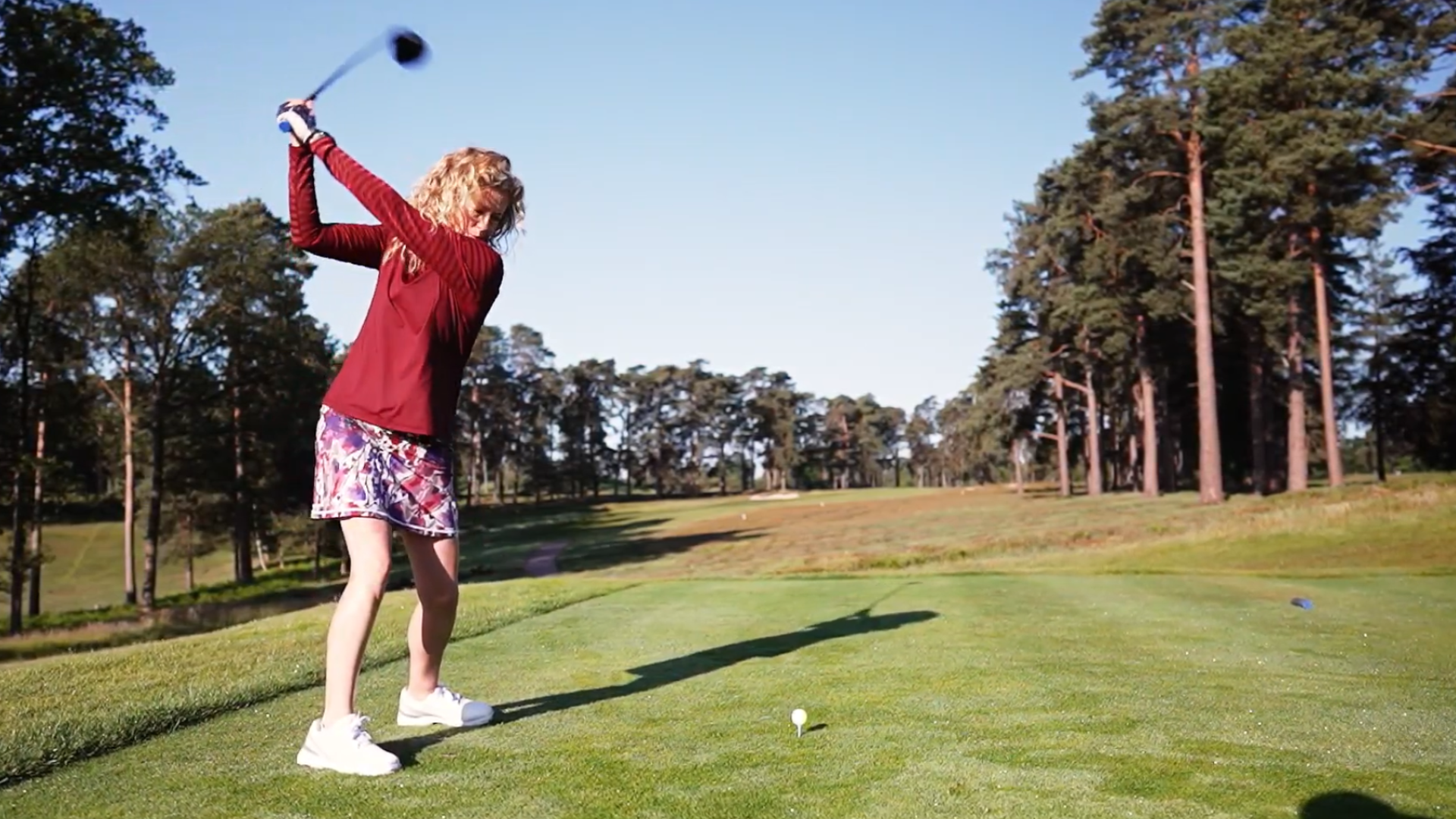

Are you a golfer that is sick and tired of having the same lesson over and over again. You just cannot shorten your swing or straighten that lead arm. You invest countless hours scouring YouTube and hitting hundreds of balls on the range. Guess what? It’s likely a waste of time. So many players will never swing it like Rory McIlroy or Nelly Korda. Here’s why... they physically cannot make the moves, without seriously risking injury.
The connection of the golfer’s physical limitation and the way they swing the club is all too often overlooked by players and their coaches. Sometimes a golfer is asked about injuries or soreness, but rarely the connection between these ailments and the swing is explained.
Coaches who are clued up on biomechanics and have gone through TPI (Titleist Performance Institute) training will immediately be able to spot when a player has either an injury or restriction just by the way they swing it.
Once an understanding has been established of a player's physical capabilities then a swing can be built for that individual. Alongside this, expectations can become more realistic. The enjoyment of golf is often tarnished with an unrealistic expectation to swing it exactly as the textbooks suggest. Once we accept what we can and can’t do we relax and begin to play with far more enjoyment.
Here are a few common faults that golfers often battle to banish and the physical reasons that may be behind why they are not improving.
Long Without The Strong
An overswing is one of the most common faults I see in many golfers. This isn’t always a bad thing, but often it’s caused by a restriction within the golfer's physical makeup.
The ability to separate the upper and lower body is so important when it comes to efficiently swinging the club. Any limit in this - ie lack of rotation - and the golfer compensates by lifting the arms to complete the swing and often collapsing at the top. You can test this by adopting your golf posture, crossing your arms across your chest, making a pretzel shape, then hold an alignment stick to help spot any movement.
Get the Golf Monthly Newsletter
Subscribe to the Golf Monthly newsletter to stay up to date with all the latest tour news, equipment news, reviews, head-to-heads and buyer’s guides from our team of experienced experts.
The idea is to only move the lower half, rotating your pelvis whilst keeping the upper body steady. If you struggle with this, place a chair in front of you and hold onto it to steady the upper body. Now try again. If you are able to rotate freer, keeping a steely stillness to your top half, then you have a stability problem and are merely trying to stay in balance. If you still can’t separate then there is a mobility issue. Both will hamper your ability to play consistent golf and hit the ball a good way.
A golfer who struggles to separate the upper and lower body will struggle with the winding up in the swing and creating torque. Often lack of rotation will cause that over swing, then the problems continue with transferring weight through the ball. The flow of the swing is stripped and the whole action becomes inefficient.
Work on improving this by lying on your back every morning, arms stretched out and take your knees to the floor on one side, engaging your core. Then slowly take them to the other side. You’ve anchored your upper body and will encourage separation.

A golfer who has limited ability to separate upper and lower body can often over-swing amongst other faults.
Bent Arms
If you struggle with a flying elbow at the top of your swing, or a slightly bent lead arm (you’re forever being told to keep your left arm straight as a right-handed golfer) ,then you may be able to blame shoulder or Lat issues.
Test this by putting your back against the wall and take your thumbs up with your arms straight beside your ears. If you lose contact with the wall and have to compensate to perform this exercise, this may highlight issues with rotator cuff or shoulder. If you have to bend your arm, that’s how you’re built and that’s ok, so don’t stress. Concentrating on keeping your arm straight can be more damaging and create tension. You can seek advice from a physio to start to free that range of movement.
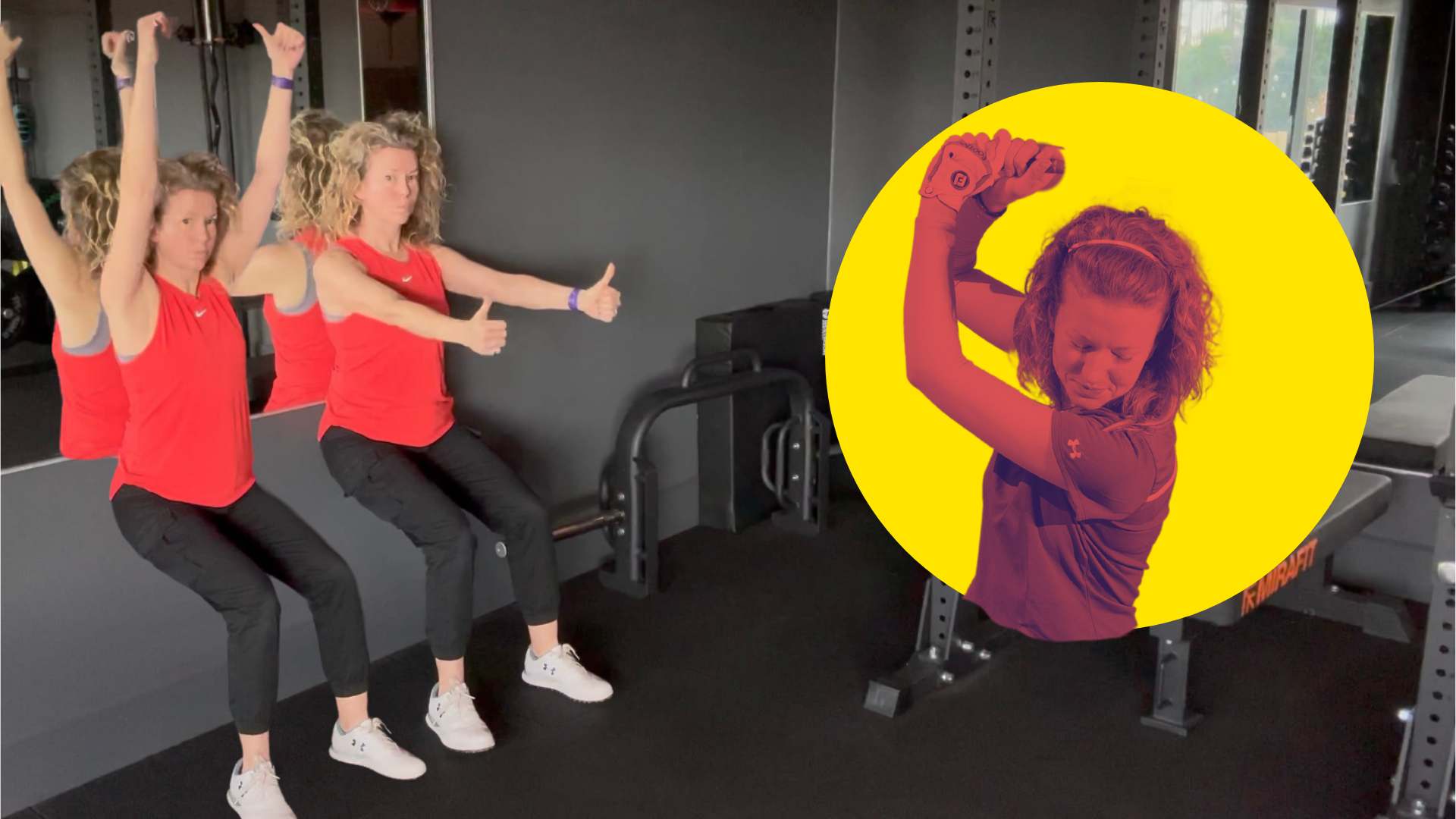
Rocking Around
A golfer who lacks good balance is somewhat of a loose cannon when it comes to keeping the ball under control. Someone who sprays the ball about and finds themselves off balance at the end of the swing will struggle to consistently return the clubface to the ball. This is something you can test and work on.
Being able to balance on one leg may not seem like a requirement for a golfer, but trust me, this matters. If you are a wobbler and you don’t pass this test then you’ll be in trouble when it comes to returning that club to the ball repeatedly.
Find a space, stand tall with your arms by your sides. Lift one leg off the ground so the upper leg is parallel to the ground. Steady yourself and now close your eyes. If you wobble, do helicopter arms, but if you stack it, you need help. The norm is 25 seconds, so if you pass this point and are still standing, stop the test. If you struggle to maintain balance then you may find you lack stability in your core. Working on a few dancing horses or dead bugs will be good practice. Aim for smooth movement and control.
Always engage your pelvic floor before beginning any exercises. Simple one leg balances will help you to start to gain better balance. One leg deadlifts will also take your balance and strength in each leg and glute to a whole new level.
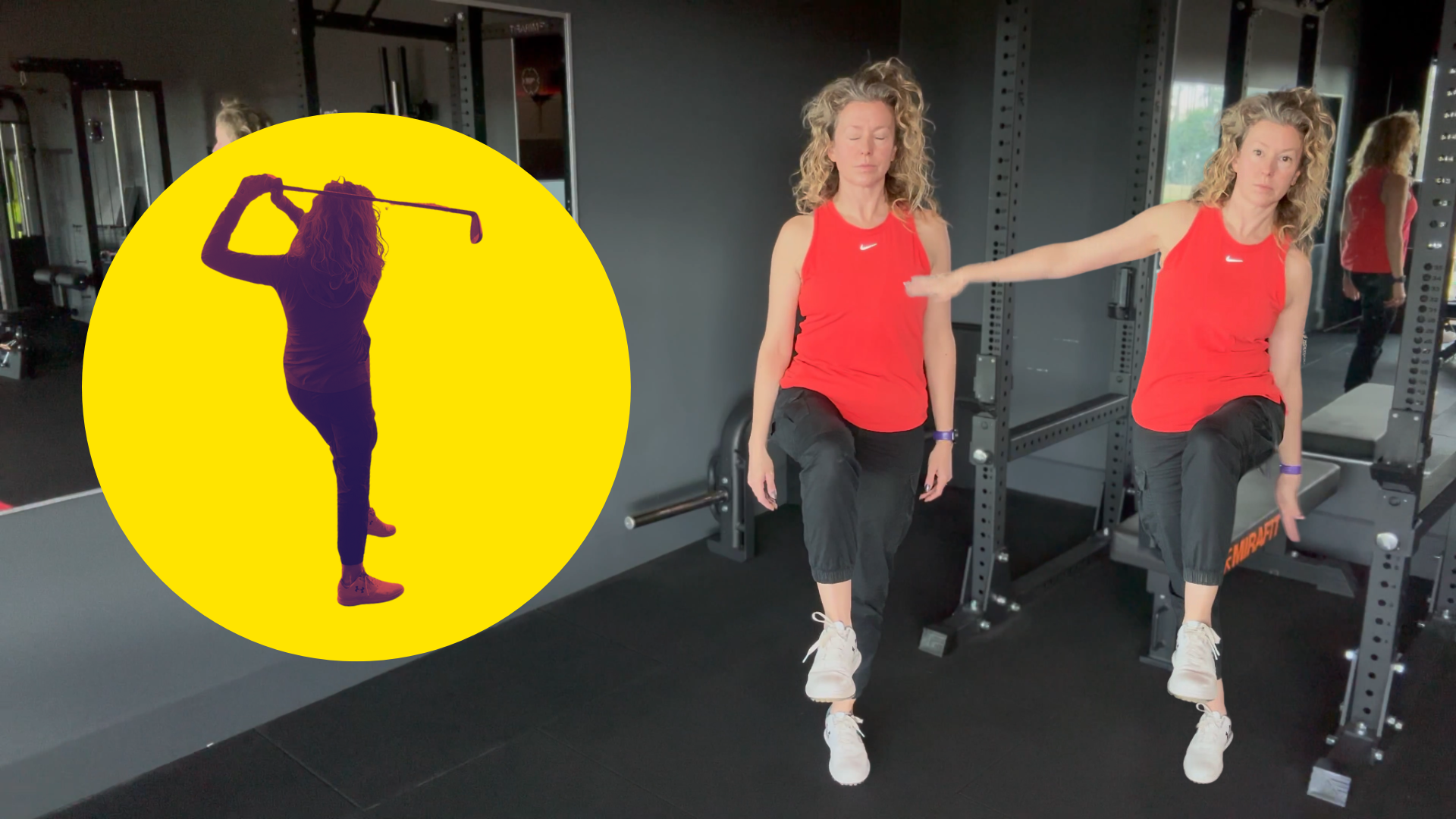
Lifting In The Backswing Or As You Hit The Ball
If you are constantly being told to keep your head down, you may be struggling with your stability and balance.
Your ability to touch your toes whilst keeping your legs straight is relative to how well you hit the golf ball. If you can’t get to your knees, this can highlight lower back and hamstring issues. It will cause faults such as loss of posture (standing up as you swing back) and early extension (standing up as you hit the ball). So if you’re constantly working on taking out the bobbing during your swing (rather than winding up) then take this test.
If you are good with one leg, but not the other, you could have some hip issues and struggle with transferring weight back and through in your golf swing. I watched some amazing content with TV broadcaster Iona Stephen and Dr Greg Rose who took her through her TPI screening in California.
Iona struggles to touch her toes, so Greg connects the dots for her to reveal that along with her standing too far away from the ball, this restriction was one of the reasons that she early extends (stands up) when she hits the ball. Check out the entire episode of Iona on Tour for a really in depth TPI experience.
A great way to work on this is to get into the habit of sitting on the ground whilst watching TV with your legs out flat and toes up. Sitting like this will help lengthen hamstrings. Lift your arms up to make a right angle and breathe into the stretch, begin to take hands towards toes. Slowly you’ll get closer. Your golf and back will thank you for this.
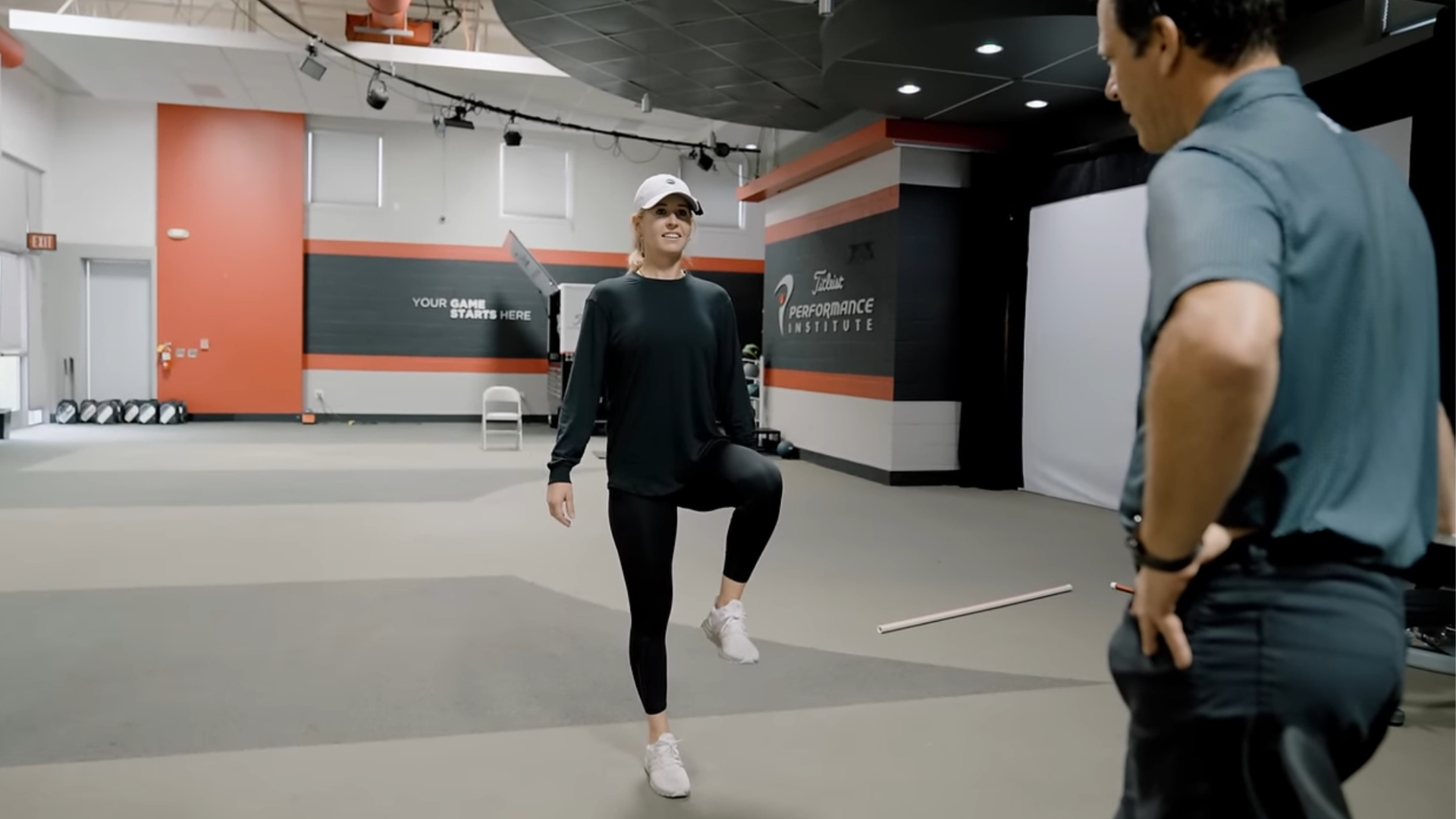
Iona Stephen went through her TPI screening with Dr Greg Rose
Sloppy Posture
Do you struggle to hit those address position goals, no matter how hard you imagine being on a tennis court with Serena Williams? You could be struggling to hinge. Often this is down to weak glutes amongst a handful of other things.
Your ability to hinge is so important to achieve an athletic posture at address. Hinging correctly from your hips requires your body to be in tip-top shape. If you struggle to keep up that dreamy set-up position throughout your round then you may need to introduce a fitness routine to strength your body as well as your golf game.
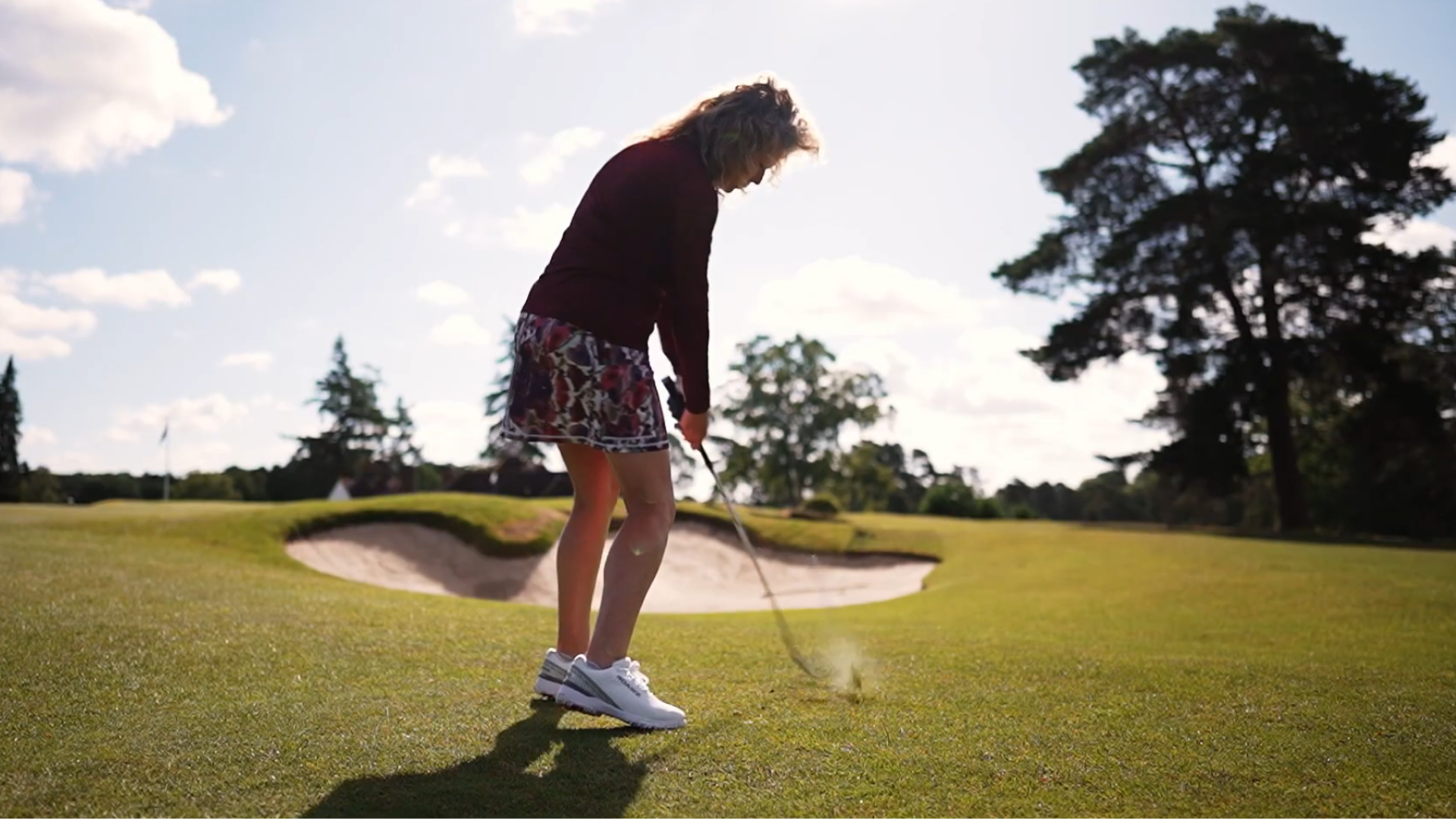
So often golfers are quite literally flogging a problem that cannot be fixed, wasting hours of time and hard earned cash. Please seek out a qualified golf fitness professional who can tell you what you need to work on physically and what effect this will have on your swing. It may explain your golfing life so far, give you a better understanding of how injuries or broken bits will limit your range of motion. Most importantly, you’ll understand limitations and build your expectations around this, by accepting what you’ve got to work with you’ll relax a bit and maybe enjoy your golf more.
The exciting part is how much you can unlock your potential further as a golfer, not by pounding balls on the range but by actually improving your physical fitness. Bring on a happier healthier you and a sparkly new golf game for 2025!

Katie is an Advanced PGA professional with over 20 years of coaching experience. She helps golfers of every age and ability to be the best versions of themselves. In January 2022 she was named as one of Golf Monthly's Top 50 Coaches.
Katie coaches the individual and uses her vast experience in technique, psychology and golf fitness to fix problems in a logical manner that is effective - she makes golf simple. Katie is based in the South of England, on the edge of the New Forest. An experienced club coach, she developed GardenGOLF during lockdown and as well as coaching at Iford Golf Centre, The Caversham- Home of Reading Golf Club and Salisbury & South Wilts Golf Club.
She freelances, operating via pop-up clinics and travelling to clients homes to help them use their space to improve.
She has coached tour pros on both LET tour and the Challenge Tour as well as introduced many a beginner to the game.
Katie has been writing instructional content for magazines for 20 years. Her creative approach to writing is fuelled by her sideline as an artist.
Katie's Current What's In The Bag
Driver: TaylorMade Qi10 9degrees.
Fairway: TaylorMade Qi10 5wood
Hybrid: TaylorMade 4 & 5
Irons: TaylorMade 770 6-AW
Wedges: TaylorMade Tour Grind 4 54 & 58
Putter: TaylorMade Tour X 33"
Favourite Shoes: FootJoy HyperFlex with Tour Flex Pro Softspikes on the course.
-
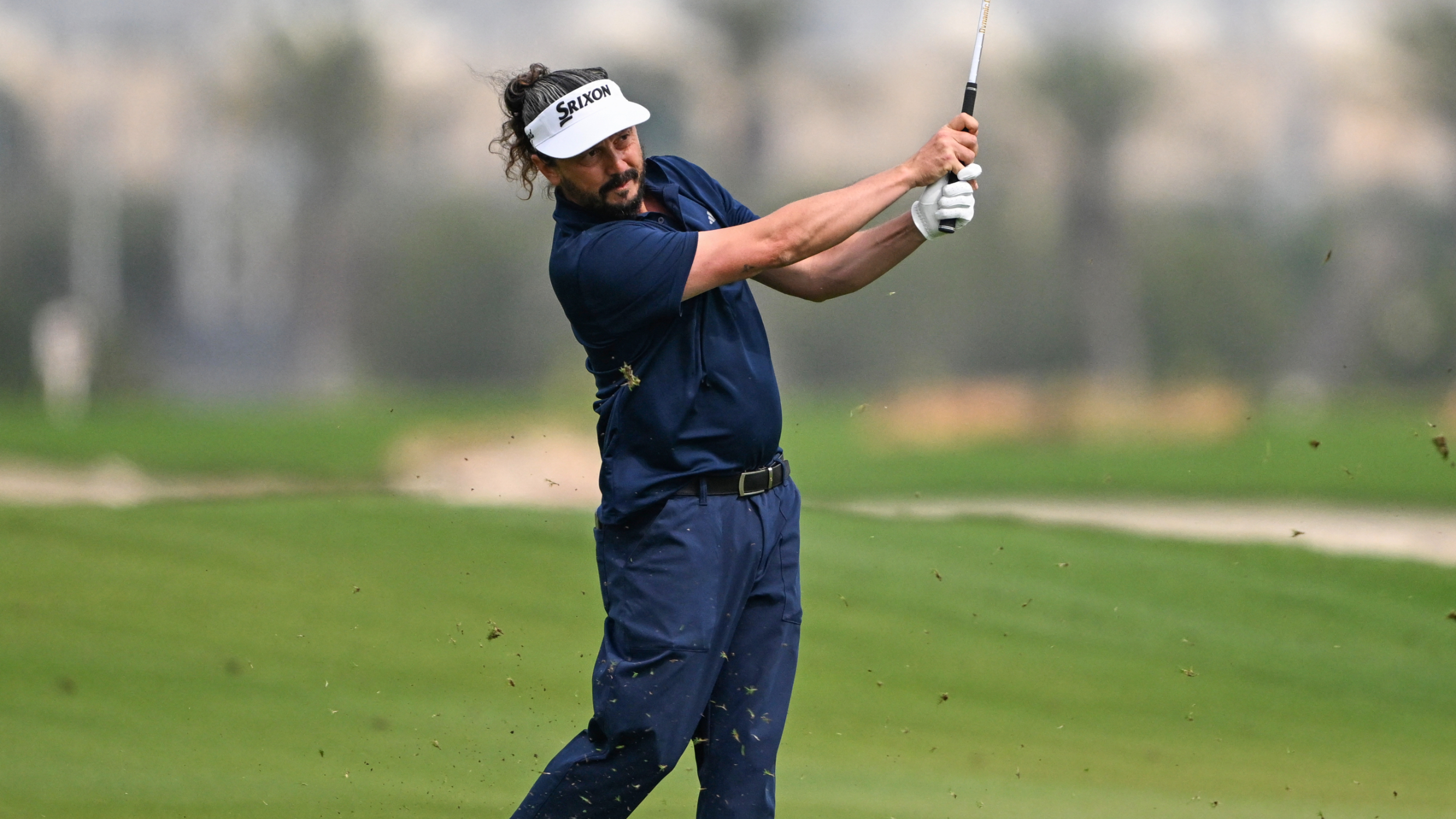 Mike Lorenzo-Vera has announced he’s bringing the curtain down on his career as “my priorities have switched”
Mike Lorenzo-Vera has announced he’s bringing the curtain down on his career as “my priorities have switched”Mike Lorenzo-Vera has announced he’s bringing the curtain down on his career as “my priorities have switched”
By Mike Hall
-
 DP World Tour Announces New $4m Event Coming To India
DP World Tour Announces New $4m Event Coming To IndiaThe inaugural DP World India Championship will offer the circuit’s largest ever prize fund for an event on the subcontinent
By Mike Hall
-
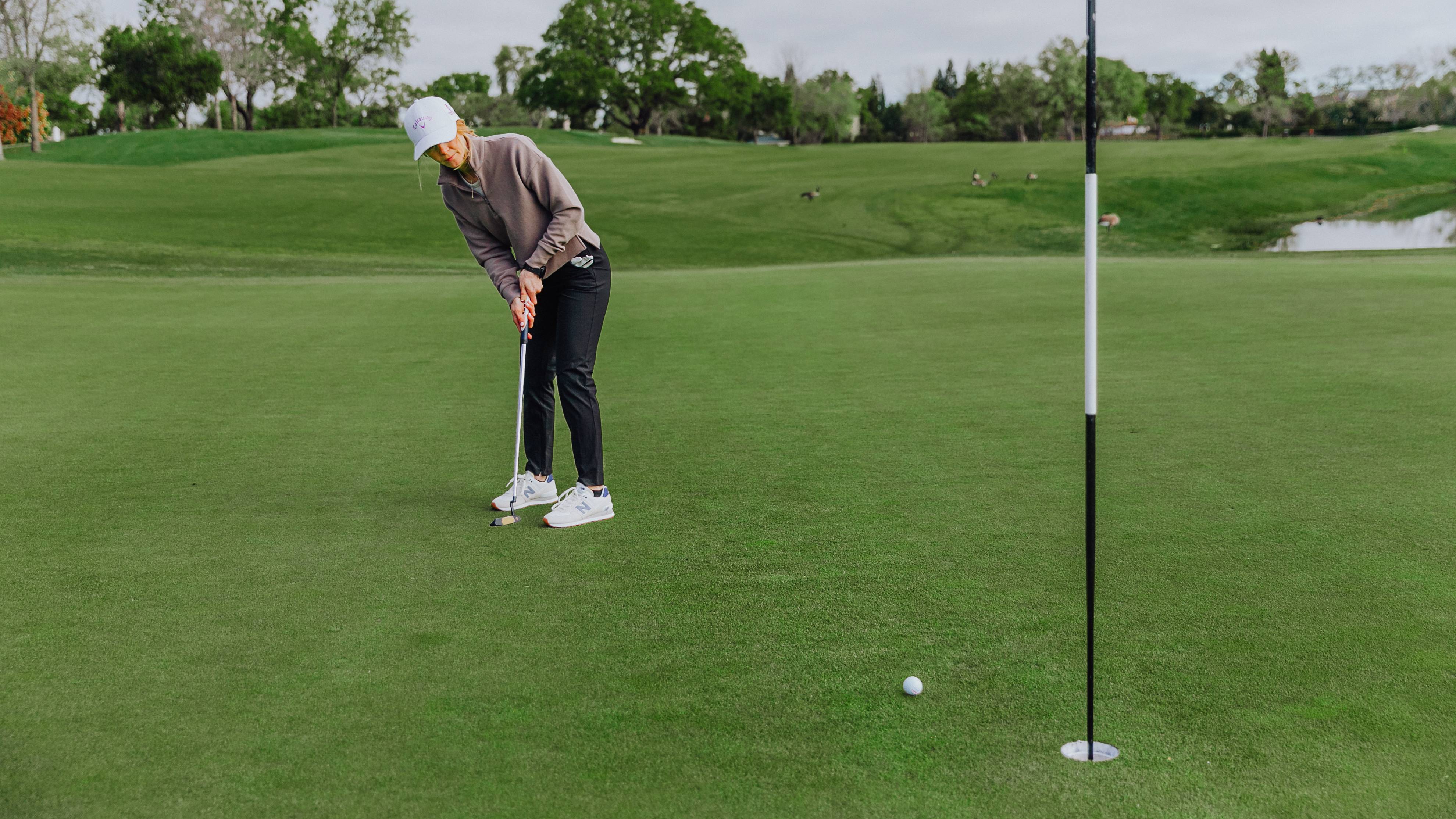 5 Things That Really Helped My Putting (After Two Years Of Trial And Error) And Finally Made Putting Enjoyable
5 Things That Really Helped My Putting (After Two Years Of Trial And Error) And Finally Made Putting EnjoyableFrustrated on the greens? Find the simple keys to improvement
By Lauren Katims
-
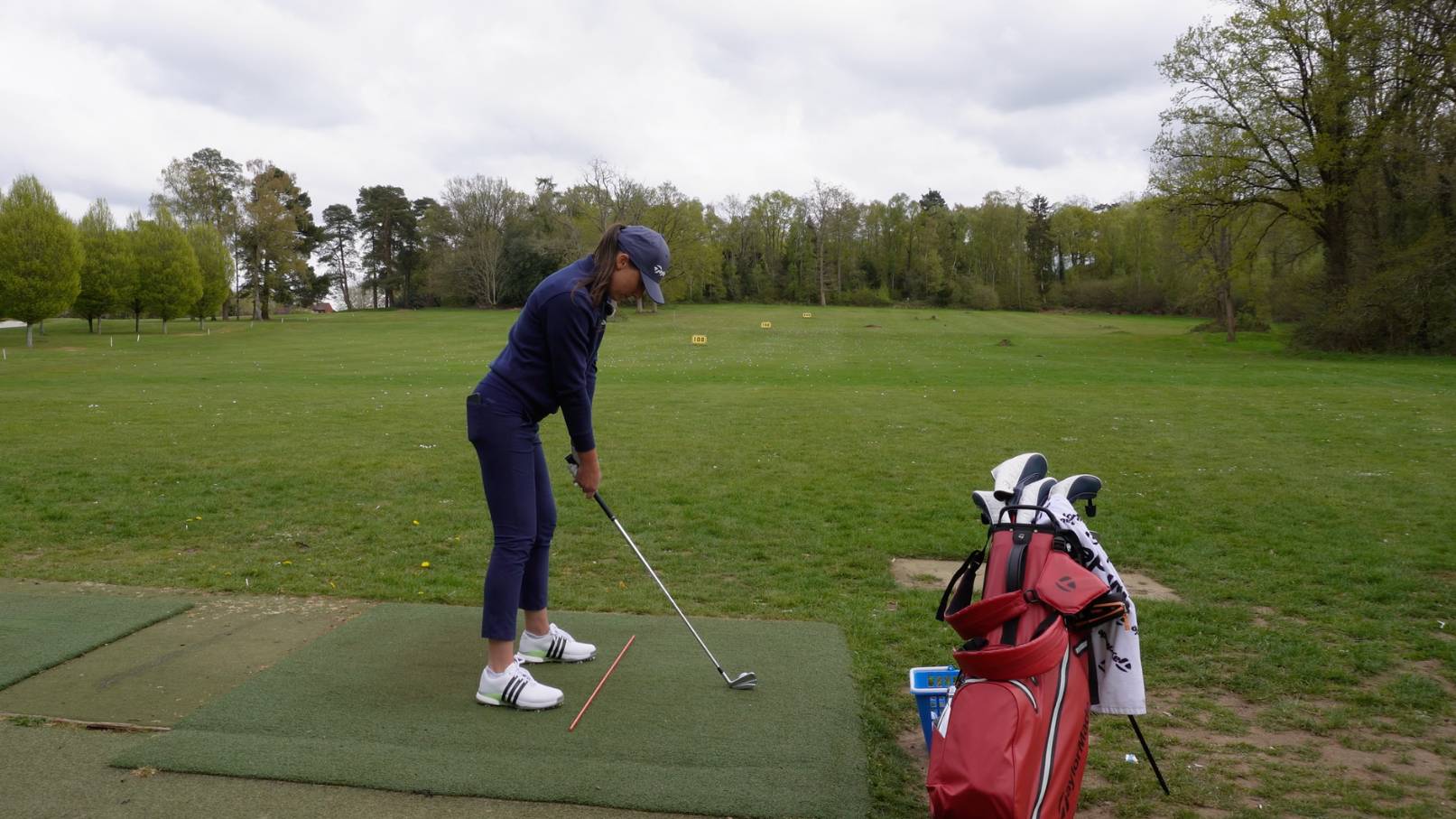 Why I'm Not Obsessed With Scratch (Yet) - The Joy Of Just Getting Better
Why I'm Not Obsessed With Scratch (Yet) - The Joy Of Just Getting BetterSingle figure golfer Jess Ratcliffe on finding enjoyment in gradual progress
By Jess Ratcliffe
-
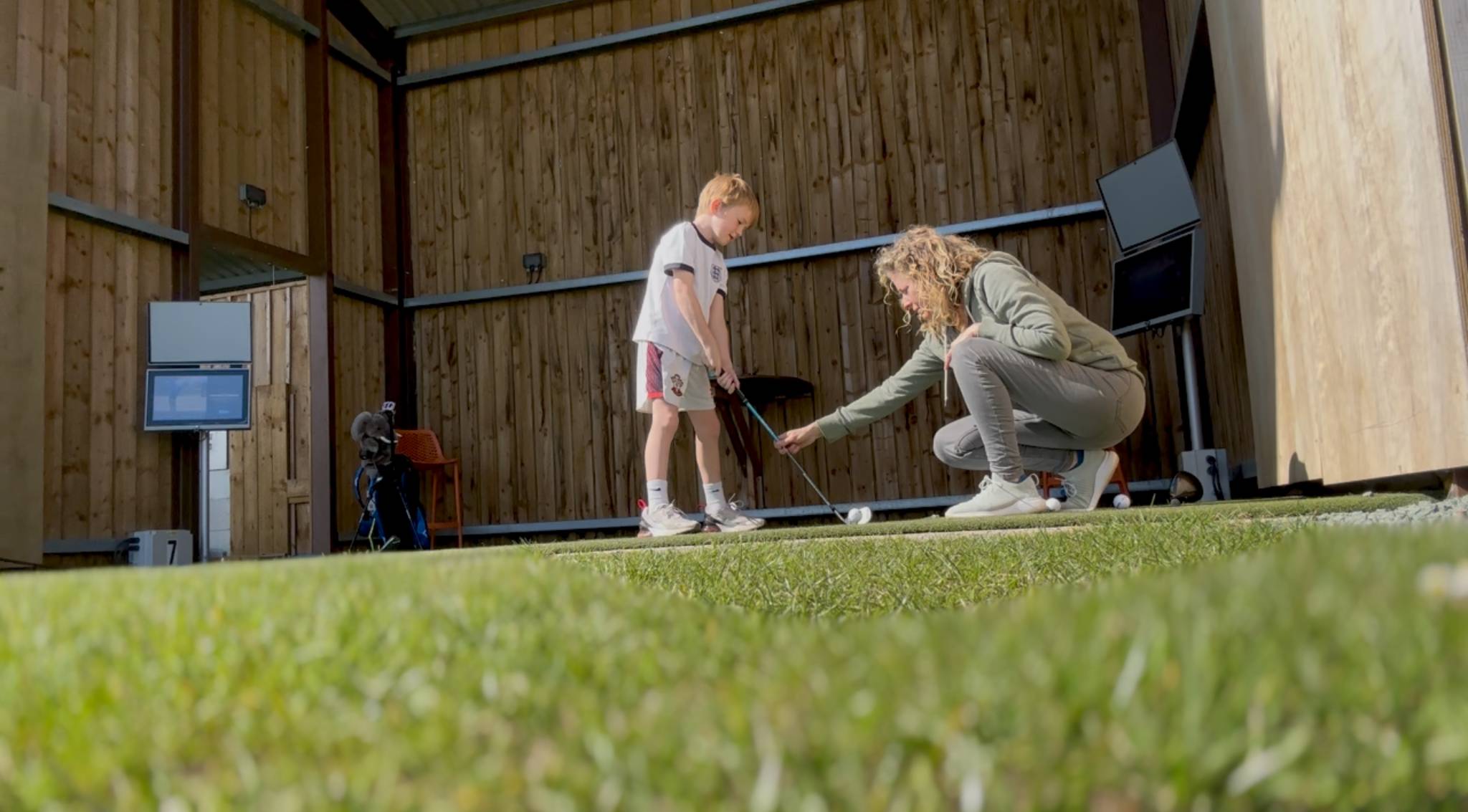 I’m A PGA Golf Coach - Here's Why I Made Sure My Kids Can Play Golf
I’m A PGA Golf Coach - Here's Why I Made Sure My Kids Can Play GolfFrom life lessons to lifelong friendships, Top 50 Coach Katie Dawkins on what golf can give your children
By Katie Dawkins
-
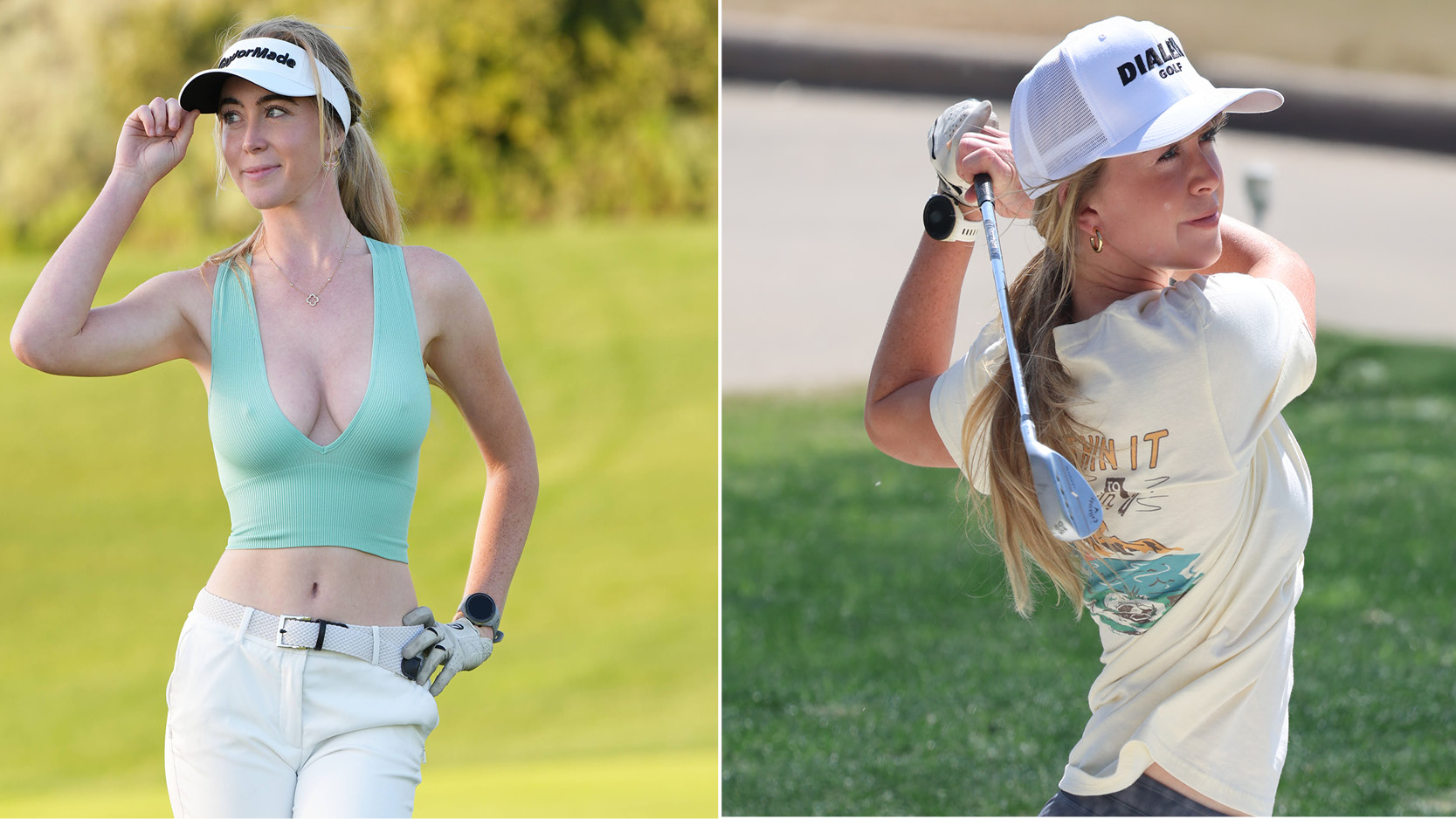 From Body-Baring To Dialed In: Grace Charis Redefines Golf Fashion
From Body-Baring To Dialed In: Grace Charis Redefines Golf FashionInfluential golf content creator Grace Charis launches new apparel brand
By Alison Root
-
 Golf Gave Me Confidence... Then Social Media's Toxic Culture Tried To Take It Away
Golf Gave Me Confidence... Then Social Media's Toxic Culture Tried To Take It AwayA young content creator's journey to own her golf game and her voice
By Katie Clarke
-
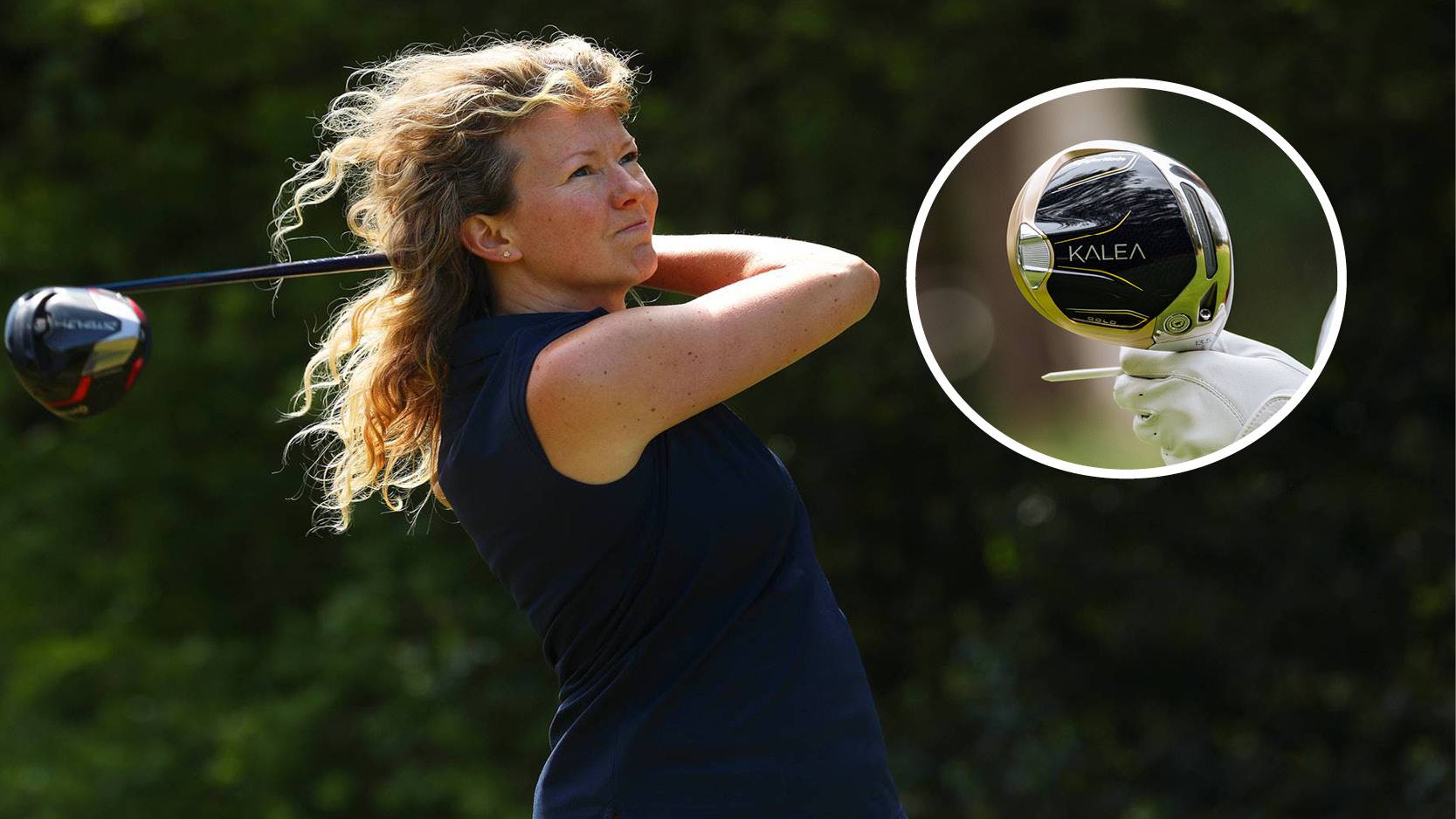 How Far Does The Average Female Club Golfer Hit Their Driver?
How Far Does The Average Female Club Golfer Hit Their Driver?We've looked at the data... Find out if you are hitting your driver an average distance
By Alison Root
-
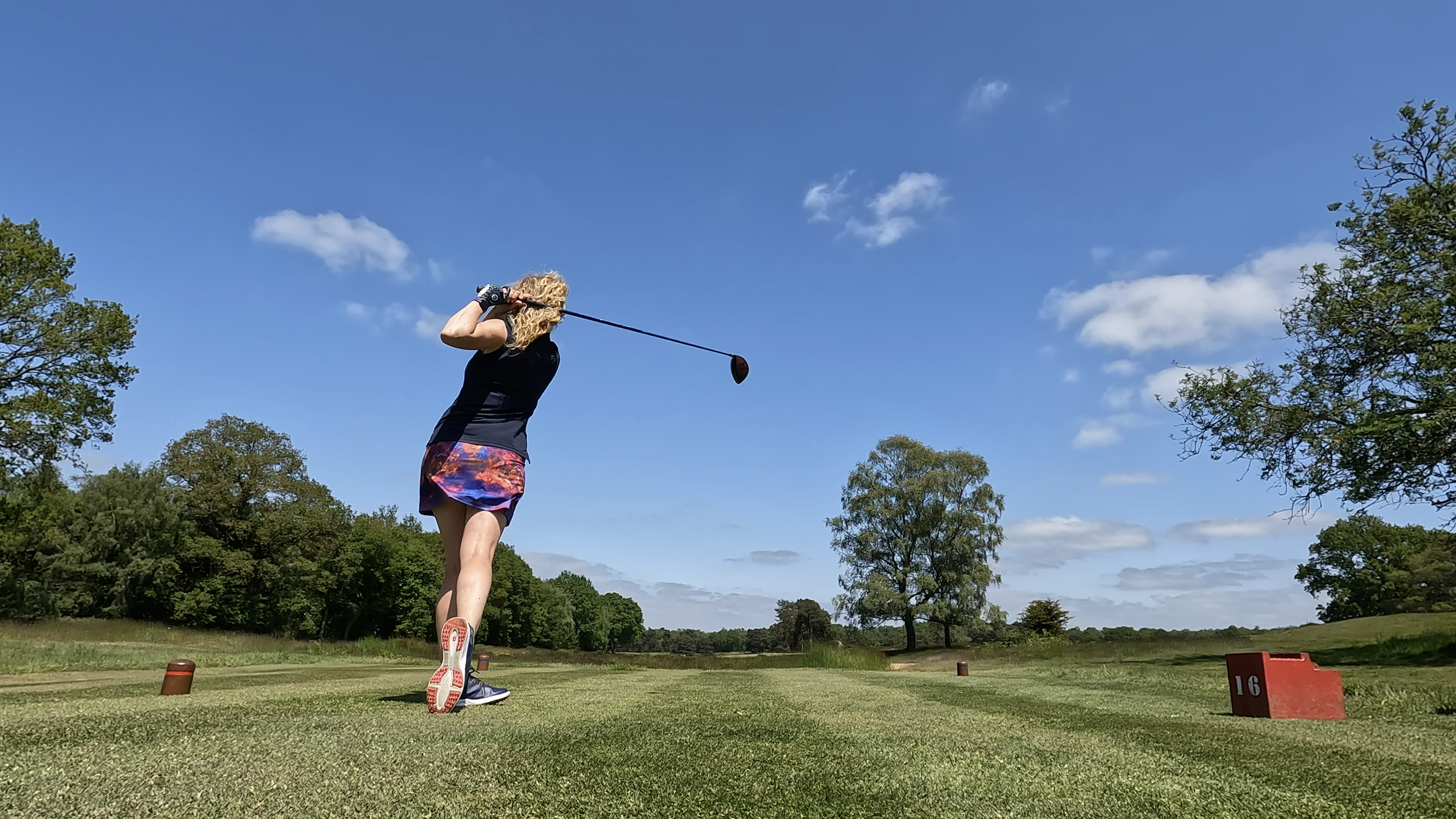 Tee Box Inequality: Why Aren't All Tees Rated For Women?
Tee Box Inequality: Why Aren't All Tees Rated For Women?Long-hitting female golfers are let down by tee ratings
By Katie Dawkins
-
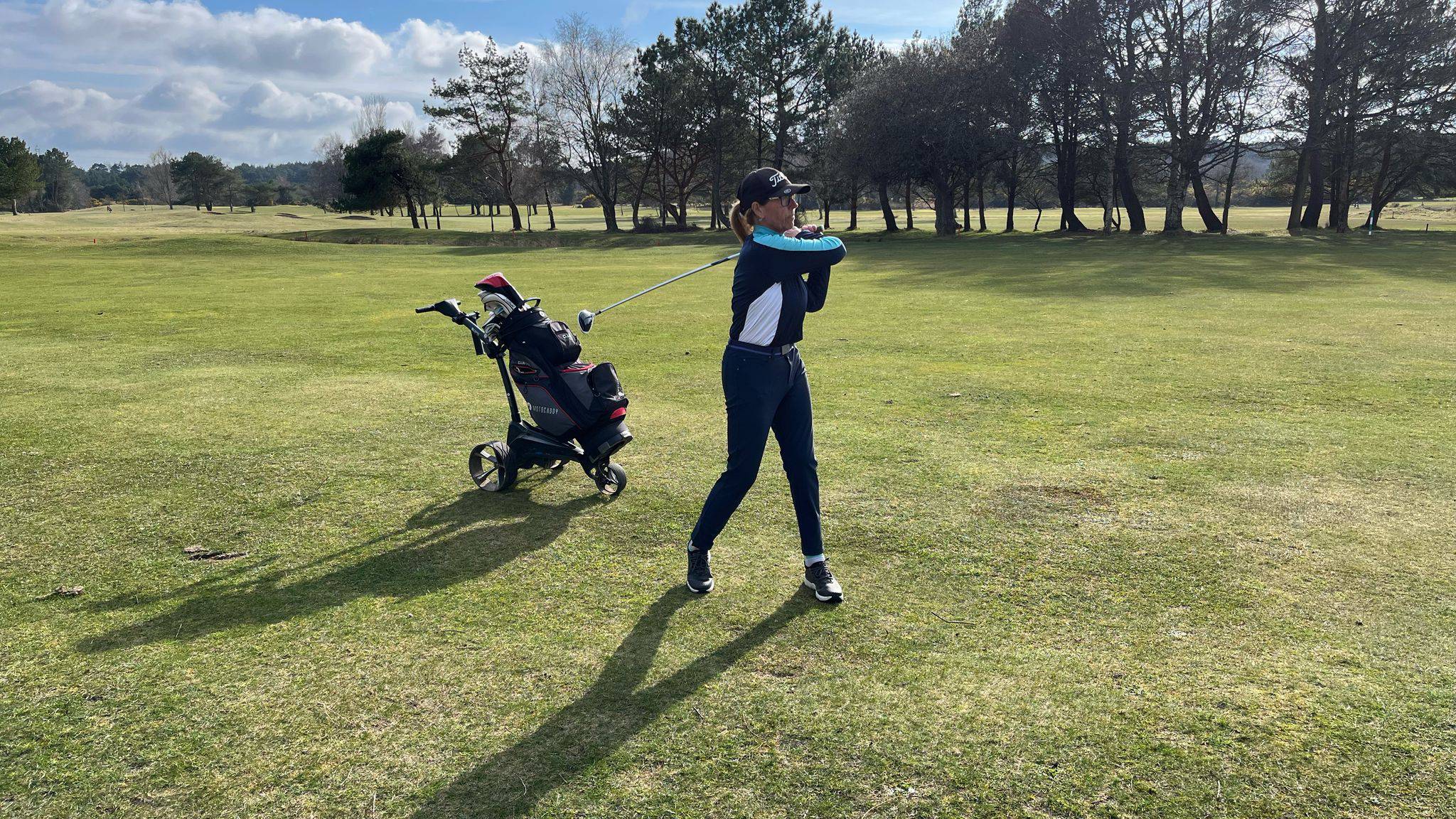 What I Learned From My First Golf Competition: The Unexpected Importance Of Preparation
What I Learned From My First Golf Competition: The Unexpected Importance Of PreparationPlaying in your first golf competition can be a daunting experience. Here are 5 tips to help you prepare for a stress-free round
By Carly Cummins